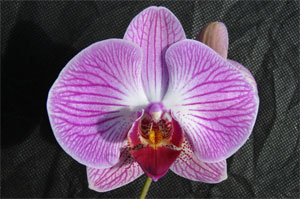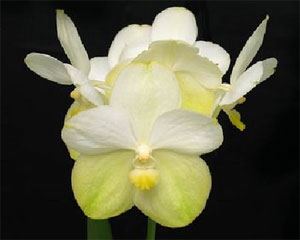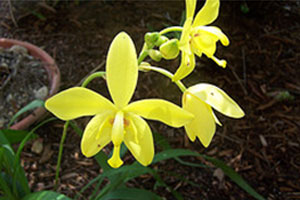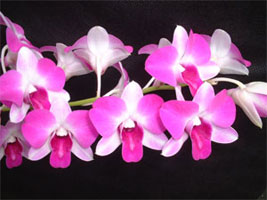What is an Orchid
For the beginners, it is hard to know what to do with your orchids for example when to feed and when to water what to spray with etc., as every one and every book has a different way. After 30 years of experience we feel we can give the amateur and expert some guidelines to help you understand a little better about your plants and in turn you should be able to make better decisions when, how and what to do.
|
|
 |
Most orchids have adapted to use this higher night humidity to absorb moisture through their leaves and root system. Species such as Dendrobium bigibbum, Dendrobium canaliculatum regularly endure and rely on this night rise of humidity to survive for many months. Often if a wet season is missed they can last for up to two years.
How do plants maintain the moisture without loosing it during the day?
If you look closely at an orchid leaf or new root you will see lots of small dents, which are holes, called stomata. These holes open as the sunlight dwindles to darkness or as the light is greatly reduced because of heavy cloud and as the sunlight becomes brighter they close so reversing the process. Commonly known as Stomatal Rhythm.
This process helps the plant hold moisture within itself when in strong light and replenish what moisture is lost at night.
It is this reversal of the normal Stomatal Rhythm, which enables Crassulacean Acid Metabolism (CAM), in orchid plants to be drought tolerant. CO2 diffuses into the leaves and is fixed into organic acids during the night, when temperatures are low and humidity is high, so minimising the loss of water by transpiration
What does this mean?
To get the best results from your watering and feeding you should water at daybreak before the stomata close.
Only use insecticides or fungicides that are not oil based such as white oil as this will seal over the stomata. Use an agricultural wetting agent to help spray cover the leaves and roots that reduces the meniscuses on the water. If none is available use a little dishwashing detergent but only use a few drops and mix well in.
| Orchid roots can tell you a lot if you have a little understanding of them also. Keeping in mind and applying the above information the roots will tell you if they like being potted in a fine, coarse mix or even mounted on a wet or dry host just hanging free in the air.
|
 |
Dendrobiums have white green root tips that are medium thickness and nearly all species have dark green root tips. They do best on a host but will do fairly in a pot that has plenty of holes in to let in the air along with an open potting mix that does not become soggy but maintains a small amount of moisture.
Just remember research your orchids and where they come from, or what species are in your hybrids this will give you the information on what your orchids require as to building a microclimate and to assist you in growing better orchids.
Happy Growing
 |
 |
Your claim to Fame is a Fame Orchid!













